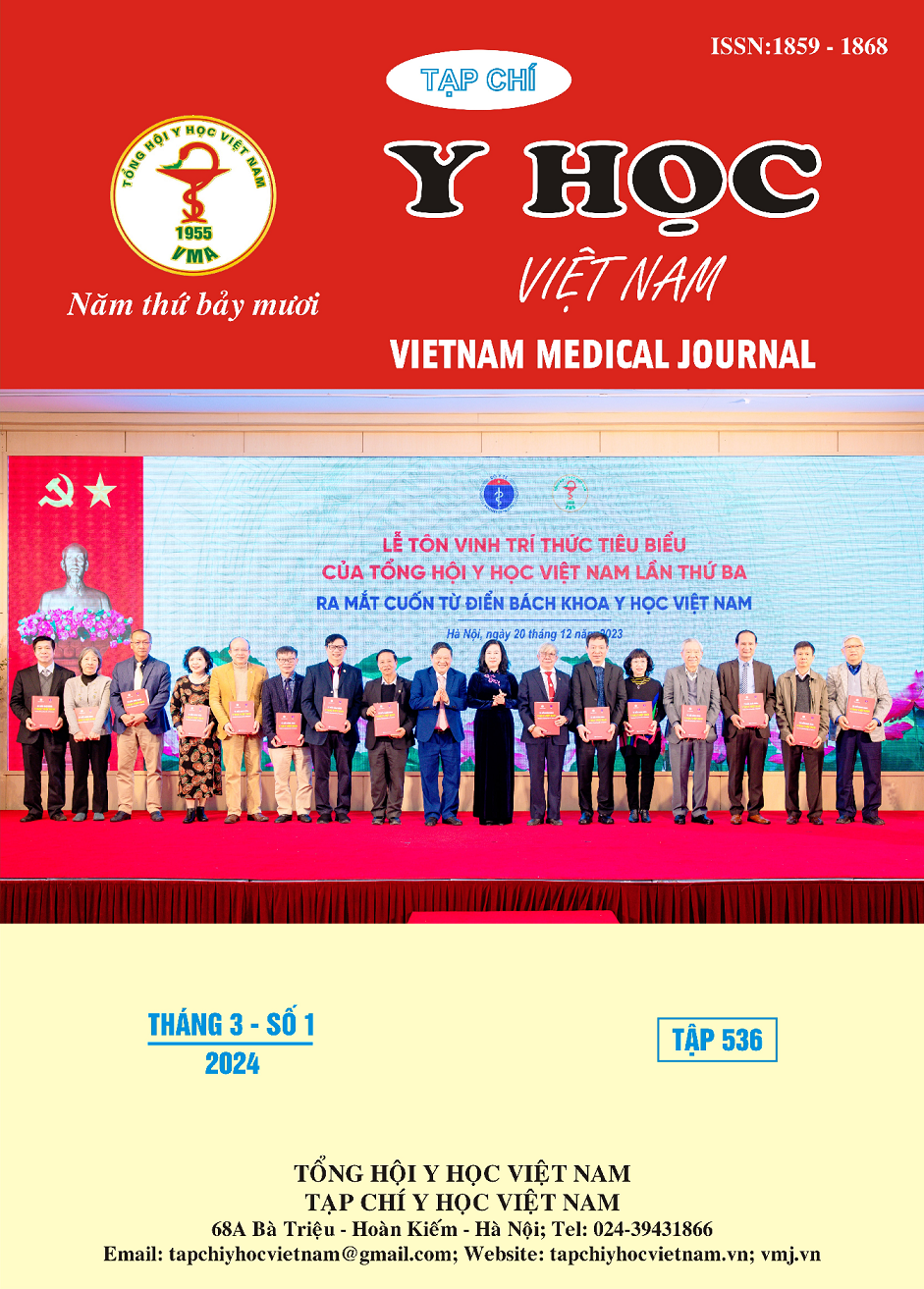NHẬN XÉT MỘT SỐ YẾU TỐ LIÊN QUAN VỚI SEPSIS Ở BỆNH NHÂN VIÊM MÔ TẾ BÀO ĐIỀU TRỊ CẤP CỨU TẠI BỆNH VIỆN BẠCH MAI
Nội dung chính của bài viết
Tóm tắt
Mục tiêu: Xác định một số yếu tố liên quan với sepsis của bệnh nhân viêm mô tế bào điều trị cấp cứu tại bệnh viện Bạch Mai. Đối tượng và phương pháp nghiên cứu: Nghiên cứu cắt ngang hồi cứu hồ sơ bệnh án trên toàn bộ 76 bệnh nhân viêm mô tế bào điều trị tại bệnh viện Bạch Mai từ tháng 7 năm 2022 tới tháng 7 năm 2023. Kết quả: 76 bệnh nhân viêm mô tế bào với tuổi trung bình là 60 tuổi, 72,4% là nam giới, 56,6% bệnh nhân được chẩn đoán sepsis. Có mối liên quan có ý nghĩa thống kê về tỉ lệ mắc sepsis ở bệnh nhân viêm mô tế bào với một số yếu tố bao gồm nồng độ lactat trong máu (OR= 7,7; 95% CI: 1,7-35,7) (p<0,01), chỉ số CRPhs (OR = 17,6; 95% CI: 1,5-202,3) (p = 0,02), điều trị trước nhập viện (OR = 6,1; 95% CI: 1,2-30,2) (p = 0,03) và thay đổi điều trị (OR = 20,3; 95% CI: 3,2-131,0) (p < 0,01). Kết luận: Viêm mô tế bào là bệnh lí hay gặp ở phòng cấp cứu, xử trí ban đầu có ảnh hưởng đến kết quả điều trị. Các yếu tố liên quan đến sepsis ở bệnh nhân viêm mô tế bào giúp chúng ta tiên lượng bệnh nhân.
Chi tiết bài viết
Tài liệu tham khảo
2. Collazos J, de la Fuente B, de la Fuente J, et al. Factors associated with sepsis development in 606 Spanish adult patients with cellulitis. BMC Infect Dis. 2020;20:211. doi:10.1186/s12879-020-4915-1
3. Porras MC, Martínez VC, Ruiz IM, et al. Acute cellulitis: an unusual manifestation of meningococcal disease. Scand J Infect Dis. 2001; 33(1): 56-59. doi:10.1080/ 003655401750064086
4. Practice Guidelines for the Diagnosis and Management of Skin and Soft Tissue Infections: 2014 Update by the Infectious Diseases Society of America. Accessed September 29, 2022. https://www.idsociety.org/ practice-guideline/skin-and-soft-tissue-infections/
5. Mikkelsen ME, Miltiades AN, Gaieski DF, et al. Serum lactate is associated with mortality in severe sepsis independent of organ failure and shock. Crit Care Med. 2009;37(5):1670-1677. doi:10.1097/CCM.0b 013e31819fcf68
6. Stamenkovic I, Lew PD. Early recognition of potentially fatal necrotizing fasciitis. The use of frozen-section biopsy. N Engl J Med. 1984; 310(26): 1689-1693. doi: 10.1056/ NEJM198406283102601
7. Jansen TC, van Bommel J, Schoonderbeek FJ, et al. Early lactate-guided therapy in intensive care unit patients: a multicenter, open-label, randomized controlled trial. Am J Respir Crit Care Med. 2010;182(6): 752-761. doi:10.1164/ rccm. 200912-1918OC
8. Puskarich MA, Trzeciak S, Shapiro NI, et al. Whole Blood Lactate Kinetics in Patients Undergoing Quantitative Resuscitation for Severe Sepsis and Septic Shock. Chest. 2013;143(6): 1548-1553. doi:10.1378/chest. 12-0878
9. Marchello CS, Birkhold M, Crump JA. Complications and mortality of non-typhoidal salmonella invasive disease: a global systematic review and meta-analysis. Lancet Infect Dis. 2022;22(5): 692-705. doi: 10.1016/ S1473-3099(21)00615-0


